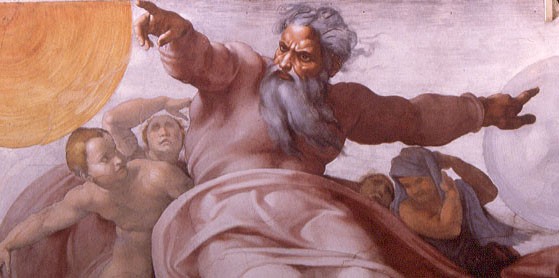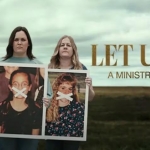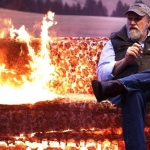How you connect apocalypse to Advent affects how you interact with the news
This article originally appeared at Baptist News Global on December 8, 2023.
Few activities fuel a connection with Advent like reading the news. Stories about weather catastrophes, wars and rumors of wars have many Christians across the theological and political spectrum wondering if the apocalypse is near and perhaps finding themselves praying the words, “Even so, come quickly, Lord Jesus.”
A 2022 study found news headlines have become increasingly negative since 2000, and “anger, fear, disgust and sadness” are on the rise, with anger being especially high in right-leaning news media.
One common response is to become weary of it all, to wish there were better news to share. In fact, three years ago during the COVID-19 pandemic, actor and director John Krasinski started a show called “Some Good News,” which was “dedicated entirely to good news.”
“One common response is to become weary of it all, to wish there were better news to share.”
But we can’t ignore all the news, whether “good” or “bad.” And what’s “good news” to some is “bad news” to others.
According to BNG Executive Director Mark Wingfield: “Our role as a global news service is to speak to the major religious and cultural events of our time, to help explain them and to shape intelligent conversation about them.”
Referring to this year’s BNG reader survey, he noted: “There are some among our readers — a minority, to be sure — who wish we just wouldn’t talk about all this ‘political’ stuff. One reader told me this week he just gets frustrated reading BNG because all this news upsets him so much. But he keeps reading.”
The heaviness many of us feel is the unveiling of a longing for something better, a feeling of being exiled from the wholeness we consider to be home. Like the cold, dark season of Advent, we wait for the birth of this home.
The dark liturgy of Advent and apocalypse
In contrast to the proclamations of “Merry Christmas,” depictions of jolly old Saint Nicholas and messages of coming “home for the holidays” featured in department stores and commercials all across the world, the liturgical readings for Advent are quite dark and typically connect the experiences of waiting for the first coming of Jesus with waiting for the second coming of Jesus.
The Gospel reading for the first Sunday of Advent quoted Luke 21, saying:
There will be signs in the sun, the moon, and the stars,
and on earth nations will be in dismay,
perplexed by the roaring of the sea and the waves.
People will die of fright
in anticipation of what is coming upon the world,
for the powers of the heavens will be shaken.
This Scripture reading hardly pairs well with licking a candy cane. Instead, it reveals a confession of feeling the presence of exile while waiting for something new to unfold.

An apocalypse of created beings in exile
Many of us who grew up in conservative Baptist churches are familiar with the end times charts that gave detailed depictions of how the preacher thought the end would unfold. Sometimes there were differences regarding whether the rapture would happen prior, during or after the great seven-year tribulation. Others disagreed over whether those who heard about penal substitutionary atonement prior to the rapture would be allowed to repent if they missed the rapture.
“And that’s why we opposed the Democrats, of course.”
But whatever the case, we were convinced the United Nations was somehow involved in a plot to use guillotines to decapitate whatever evangelicals were present on the earth during those seven years. And that’s why we opposed the Democrats, of course.
No matter the differences, each view of the apocalypse ended in division where animals go nowhere after death, while people do, and where some people go to one place while others go to another. In other words, these were eschatologies of created beings in exile from one another.










Leave a Reply
Want to join the discussion?Feel free to contribute!